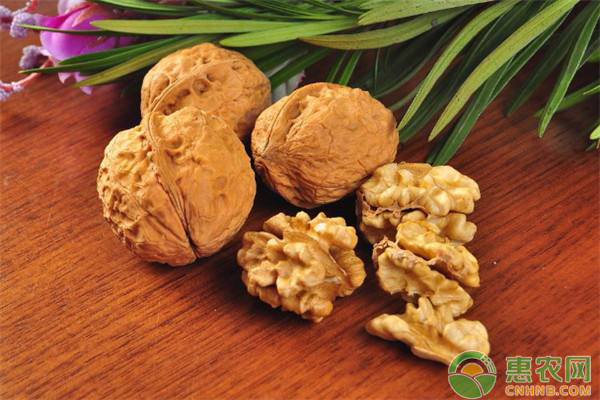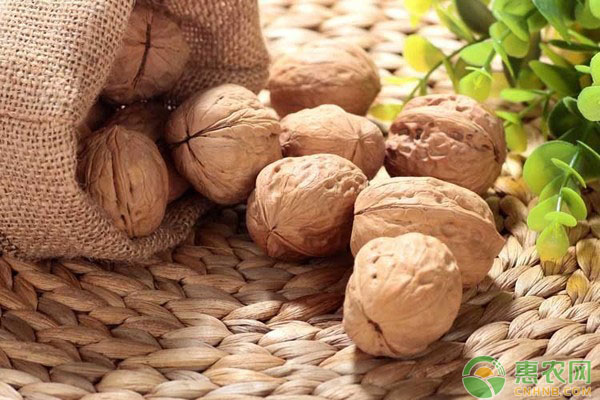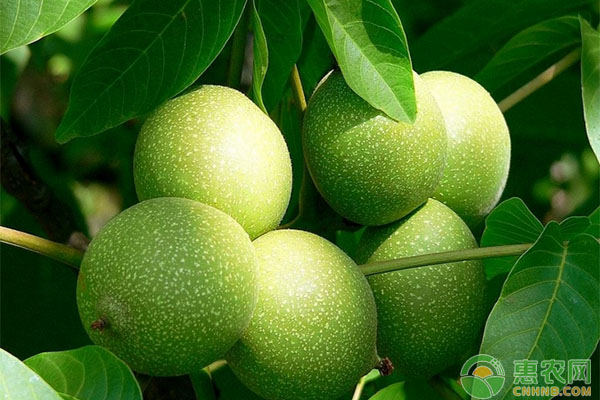Walnut sprouting is one of the main methods of walnut seedling breeding and walnut tree grafting transformation, also known as large square buds. It has the characteristics of fast speed, simple operation, convenient management and high survival rate. The following will specifically talk about the grafting technology of walnut.

First, the cultivation and collection of scion
It is necessary to collect the developmental branches with strong growth and full leaf buds as the scion in the well-planted garden with clear source and pure variety. After the scion is harvested, the compound leaves should be removed in time (retaining 1-2 cm petiole) and tender shoots, tied and tagged, and finally Store in a wet sack. To be close to the ground, with the use of mining, in order to prevent the loss of water to affect the survival rate.
1. Cultivation of scion. First, select the fine varieties suitable for local development. It is best to establish a special mother garden or variety garden. The mother plants should choose adult plants with pure varieties, strong growth, high yield and stable yield, and no pests and diseases. It is necessary to focus on the management of the mother tree. After germination, according to the germination of the branches and the distribution of the branches, a re-cutting is carried out, and the dense branches, long branches, cross branches, pests and branches and inflorescences are removed in time. In the vigorous growth period of the branches, combined with watering, the application of nitrogen: phosphorus: potassium is 2:1:1 compound fertilizer, the amount of fertilizer is 100 kg per mu. After determining the grafting date, the ear branches are determined 4 to 5 days in advance and topped.
2. Scion collection. The scion should be selected from the upper part of the outer periphery of the parent tree crown to grow vigorously, develop and enrich, the core is small, thick and smooth, no pests and diseases, the thickness of 1 ~ 1.5 cm, the development of branches of the handkerchief. Thin branches and long branches cannot be used as scions. Immediately after the scion is harvested, the leaves are removed (only a small petiole is left) and the tip of the upper part of the shoot is not filled to reduce water evaporation. Then, according to the thickness of each 20 or 30 bundles, the variety is marked and wrapped in a damp cloth. Place it in a damp, cool place. The scion is required for current use. If it needs to be transported over long distances, it must be kept moist. Bamboo baskets, perforated wooden boxes, and 60~65% sterilized sawdust packaging are used in transportation. After arrival, the temperature will be spread. It is forbidden to press and rub the high temperature and the branches, and the journey should not exceed 3 days.
Second, the selection, cultivation and management of rootstocks
The rootstock adapted to the walnut buds is a semi-lignified dry branch with a thickness of 1-1.5 cm in that year. 1. Seeds are propagated in the same year, the raw thickness reaches 1-1.5 cm, semi-woody seedlings, 2, 1-2 years old, and the seedlings are propagated and the un-lignified seedlings are cultivated in the same year before the leaves are germinated to the leaf-leaf stage. 3, planted 2-4 years of raw walnut saplings, through the cutting, retraction, short cut, topping and other culture of the year of semi-lignified branches; 4, high exchange for the unfinished tree, the half-wood The branches are dried.
1. The growth potential of rootstocks is related to soil water status and the active state of meristematic cells in the formation layer, which directly affects the formation of callus. Common rootstocks for walnut grafting are walnut rootstock and wild walnut (pecan), which is best for this anvil. After 1 to 2 years of growth, the seedlings are flattened before the leaves in the previous year. If they are perennial trees, the parts to be grafted before the leaves are short-cut, prompting the emergence of strong branches. Strengthen water and fertilizer management after germination. When the branches grow to 30 cm, they are topped, and the lower germinated branches are removed in time to form a smooth grafting site.
The soil water content of 14-17.5% is conducive to the formation of callus. The water content is 16% (wet without sticking) and the callus formation is the largest; below 11.5% or higher than 19.8%, it is not conducive to the formation of callus. . After the date of grafting is determined, according to the soil moisture, 3 to 5 days before the grafting, the water is poured once.

Third, grafting time
Due to the difference in geographical location, it is generally suitable from the beginning of June to the beginning of July, with the roots of the rootstock and the semi-lignification of the scion in the current year (before and after the wheat yellow). At this time, the cell formation of the interface formation layer is vigorous, the cortex is easily peeled off, and the graft is easy to heal.
The "injury" phenomenon is an important reason that affects the grafting of walnuts. After entering the vigorous growth period, the walnut tree has less wounds and active layers, which is conducive to wound healing. The buds are mostly carried out during the thickening of the new shoots. The suitable temperature for the formation of callus from walnut is 25-28 °C. Below 15 °C or above 35 °C is not conducive to the formation of callus. The callus formation was slower at 15~25°C, and the callus formation rate was faster at 28~35°C, but the duration was shorter and the callus formation was less.
Fourth, the grafting method
Grafting knives can be used with single-edged and double-edged knives. The double-edged knife is generally 2.5-3 cm wide. When the single-edged knife is grafted, the bud piece should be taken first. After cutting the rootstock, use the same amount of buds to accurately grasp the size of the rootstock incision. Grafting with a double-edged knife, the rootstock incision should be cut first, and the incision skin is not peeled off temporarily to prevent air drying. After the bud is set, the rootstock incision skin is torn off according to the width of the bud.
1. Use a double-edged knife to cut the knife in a straight and smooth part of the rootstock. The width is 2.5-3 cm (width adjustable) and the xylem is deep. Then, cut a knife from the left edge, deep into the xylem and connect the upper and lower edges, pick up the cortex and tear it off, and finally tear a gap in the lower right corner of the incision, about 3 cm long and 3-4 mm wide. To facilitate drainage. Use a single-edged knife, first take the bud, cut a knife at the upper end of the bud at 0.5 cm, cut a knife at the lower end of the bud at 1 cm, and then cut a knife on each side of the bud, the bud width should be 1.2 cm or more. .
2. Select the scion that is equivalent to the thickness of the rootstock, and cut a knife in the middle and upper part of the full bud (the bud is centered). Deep into the xylem, the width is slightly smaller than the rootstock incision. Then cut a knife on the left side, deep into the essence and connect the upper and lower knife edges. Finally, use the thumb and forefinger to pinch the base of the petiole to the right side to remove the bud piece slightly. The inner surface of the bud piece needs a little xylem (called growth). Point), the inner surface of yellowish brown buds can not be used.
3. After removing the bud piece, immediately insert the layer on the left side of the bud piece and the left side of the rootstock, the upper end of the bud piece and the upper end of the rootstock into the incision, and use the plastic strip to wrap the bud piece from the bottom to the top (the bud base and the petiole part are both To tie it tightly, prevent the buds from tipping out, leaving only the petiole.
4, walnut shoots buds with high content of tannins, easy to produce black insulation layer in the air, affecting the formation of interface callus. Therefore, when grafting, it requires skilled, quick action, sharp cutting, fast cutting, quick picking, and fast binding to improve the grafting survival rate.
5. The callus is formed faster in the dark environment, so the survival rate of the bud joints in the north and northeast is higher than that in the south and southwest.
6, after the buds are connected. Leave a complete and robust compound leaf on the bud, cut off the anvil tip, and disperse the wound flow of the bud wound, which is conducive to survival.

Fifth, after the management
After the bud is connected, it should be observed frequently, and the germination on the rootstock should be erased in time to avoid affecting the germination of the buds. If the buds become black within a week, they can be re-attached. When the bud sprouts about 5 cm, cut the anvil tip from the interface 3-5 cm. When the bud length is 30 cm, it is necessary to loosen the plastic strip longitudinally on the back of the bud, and tie the binding branch to prevent the wind from folding.
1. After the pick-up, the germination of the germination on the rootstock is wiped out in time to concentrate the nutrition and promote the germination of the bud.
2, 10 to 15 days after the reception (in case of rainy days, or the temperature is low, the time will be longer), check whether it survives. Where the buds are fresh, the petiole is ready to survive. Those who have not survived should be replenished in time.
3, when the new shoot grows to 5 cm long, the binding is removed, so as not to affect the growth of the bud. When 20 to 30 centimeters long, pillars are set up to prevent wind breaks and collisions.
4. In mid-September, pick up the new shoots and promote the filling of the branches.
5, the new shoot growth period, often suffered from leaf-feeding pests, it is necessary to prevent and control in time.
6. The seedlings will strengthen the management of fertilizer and water in the long-term growth period, continuously weed and weed, and promote the growth of seedlings.
2-Piece Ostomy pouch MDK-BO-02 100ML
A one-piece colostomy bags, drainable pouching system designed to be opened at the bottom when emptying. These colostomy bag machine are most suitable for colostomies or ileostomies. Ostomy bag colostomy barrier is a standard wear skin barrier that is gentle to the skin and allows for frequent pouch removal. To close the pouch, use the curved, beige clamp. Soft, beige disposable colostomy bag pouch panels on body side help provide comfort.
The features are soft and flex,standard wear, skin barrier, flat. The Chassis made in 100% hydrocolloid No tape border. Cut-to-fit skin barrier. Ultra-clear odor-barrier pouch film. Curved, beige pouch clamp. With comfortable ware pouch panel body side only. Not made with natural rubber latex.
Ostomy urostomy colostomy bag care products consist of sodium carboxymethylcellulose, adhesives made from medical hot melt adhesives, and separator paper or separators. Nursing equipment for ileum, colon, rectum or urethral stoma,The coloplast colostomy bag comes into contact with intact skin and intestinal lumen,Non-sterile supply. Colostomy bag reusable for stoma washing, care and collection of excreta and skin care around the stoma.
Use disposable colostomy bag, make sure the skin around the stoma is clean and dry before use. Remove the bags for colostomi from the package and separator or paper. Reshape the coloplast colostomy bag into the desired shape and size to fit the skin around the stoma. Apply the colostomy convatec bag to the skin around the stoma,adjust the shape of the paste again,Gently press so that it is firmly flat on the skin. Attach the stoma colostomy bag undercarriage to the stoma. The colostomy bag care can be peeled off the skin, don`t reuse. These one-piece-colostomy bag or two-piece-colostomy-bag are non-sterile product and is valid for three years under the condition of meeting the storage conditions.
1-Piece Ostomy Pouch,One Piece Ostomy Bags,One Piece Ostomy Pouch,1 Piece Ostomy Bag
Henan Maidingkang Medical Technology Co.,Ltd , https://www.mdkmedicales.com